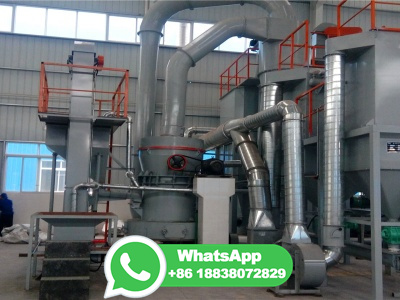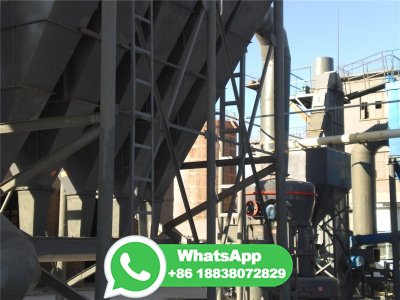
(PDF) Microencapsulation: Fundamentals, methods and ...
chemical process (polymerization), ... The challenges facing the micro/nano encapsulation processes, recent proofof concepts and future trends are also discussed. View.

chemical process (polymerization), ... The challenges facing the micro/nano encapsulation processes, recent proofof concepts and future trends are also discussed. View.

In contrast to classical cleanroom processes the chemical deposition doesn't require any lithography, ... Nickel thickness typically between 1µm and 5µm; up to 20µm for special appliions. Gold layer as oxidation protection with a typical thickness between 20nm and 70nm. ... Micro Manufacturing Processes.

As with any chemical process, the uniformity of the etching can vary across the substrate, making this difficult. Timed etches whereby the etch depth is determined by multiplying the etch rate by the etch time are difficult to control and etch depth is very dependent on sample thickness uniformity, etchant species diffusion effects, loading effects, etchant aging, surface .

· 1. Essential aspects of chemical reactor design. From the standpoint of computational fluid dynamics (CFD), reaction engineering is the appliion of transport phenomenon and chemical kinetics knowledge to industrial systems. Chemical kinetics—the study of rates of chemical processes—is founded on the experimental study of how different ...

2. Microelectromechanical Systems (MEMS) What is MEMS? Microelectromechanical systems (MEMS) is a process technology used to create tiny integrated devices or systems that combine mechanical and electrical components. They are fabried using integrated circuit (IC) batch processing techniques and can range in size from

· Reverse electroplating for gold recovery, p. 2. 2006. A. Hello, these following (non business) hobby websites mention the same article dealing with the security of microprocessors, and details how one might dissolve the packaging materials (using fuming nitric acid) I think. Now, I don't know how this might affect the following processes for gold extraction, in fact I think it .

· After the process is done and all the gold is removed from the item, have two 5gallon buckets available. One with a mixture of hot water and sodium bicarbonate, or common baking soda, and the other with 4 gallons of tap water. Pour the solution slowly into the plain tap water bucket with the 4 gallons, and let sit for 24 hours.

Sterilization procedures should be monitored using biological, mechanical, and chemical indiors. Biological indiors, or spore tests, are the most accepted means of monitoring sterilization because they assess the sterilization process directly by killing known highly resistant microorganisms (, Geobacillus or Bacillus species). However, because spore .

· Porous gold films presented in this paper are formed by combining gold electroless deposition and polystyrene beads templating methods. This original approach allows the formation of conductive films (2 × 10 6 (Ω·cm) −1 ) with tailored and interconnected porosity. The porous gold film was deposited up to #x2009;#x3bc;m on the silicon substrate .

· GOLD FLOTATION. The flotation process, which is today so extensively used for the concentration of basemetal sulphide ores and is finding increased use in many other fields. In 1932 flotation plants began to be installed for the treatment of gold and silver ores as a substitute for or in conjunction with cyanidation.

Micro process engineering is approaching both academia and industry. With the provision of micro devices, systems and whole plants by commercial suppliers, one main barrier for using these units has been eliminated. This book focuses on processes and their plants rather than on devices: what is before, behind and around micro device fabriion and gives a .

Heap leaching is an industrial mining process used to extract precious metals, copper, uranium, and other compounds from ore using a series of chemical reactions that absorb specific minerals and reseparate them after their division from other earth materials. Similar to in situ mining, heap leach mining differs in that it places ore on a liner, then adds the chemicals via drip systems .

Electroplating Jewellery. In this paper, we shall concentrate on the electroplating of gold and gold alloys and rhodium – one of the platinum group of metals with a good white colour and tarnish resistance – for decorative appliions. Electroplating is a method to put a metal coating onto an object, in our case a piece of jewellery, by ...

· They were engaging in just this process. If gold is physically bound to minerals, it can sometimes be separated by the appliion of heat in a smelting operation. At other times, the only way to separate the gold is to immerse quantities of black sand in chemical baths – a process called wet chemical extraction.

WATER CLUSTERS. Physical chemists are well aware of water's mysterious nature 1 and the many different forms of water clusters 2 due to hydrogen bonding. 3 Very little about water clusters in bulk phase ( water not at the surface or edges of another material) is understood. 4 In fact, it is considered to be one of the unsolved problems in chemistry. 5 These clusters .

chemicals in gold processing BINQ Mining. Chemicals Used For Gold Processing Manganese Crusher Search chemicals used for gold processing to find your need Zenith Mining and Construction Machinery is a global manufacturer and supplier We supply full crushing 187 More detailed.

Rock Gold Processing Plant Hard Rock Gold Plant Stone Gold Processing Plant manufacturer supplier in China offering 5 Tons Rock Gold Beneficiation Equipment Small Scale Processing Plant High Efficient Diamond DMS System Plant Complete Alluvial Rock Diamond Ore Process Equipment Cement Limestone Quartz Gold Ore Grinding Ball Mill for Gold Mining Equipment .

Trade CME Group Futureswith Interactive Brokers. Access a wide range of products with a comprehensive suite of trading tools, algorithms and order types. Use micro futures and options to trade a slice of the liquid futures and options markets with the same efficiency as standard contracts with less upfront commitment. Micro Emini.

Packaging Technology and Design Challenge for Fine Pitch MicroBump CuPillar and BOT (Direct Bond ... Although the baseline packaging process methodology for a normal pad pitch ( inline 50µm ... (Electroless Nickel Electroless Palladium Immersion Gold), DIG (Direct Immersion Gold), and Solder Coat surface finishes as shown ...

· Microchimica Acta (MCA) has established itself as a premier forum for truly novel research results in chemical and biochemical analytical sciences based on the use of micro/nanostructured materials. Beyond such advanced analytical approaches, coverage is extended to methods and devices that provide expedient solutions to the most contemporary .

· Yes, it is possible to extract gold from seawater in theory, but it's really not practical to do so. It is estimated that there is, in total, about eight million tons of gold dissolved in the world's oceans. While this is a lot, the oceans are huge, and the actual concentration of gold in seawater is only about %.

When feature widths were far greater than about 10 micrometres, semiconductor purity was not as big of an issue as it is today in device devices become more integrated, cleanrooms must become even cleaner. Today, fabriion plants are pressurized with filtered air to remove even the smallest particles, which could come to rest on the wafers and contribute .

Since ENIG contains an electroless gold layer, it's quite difficult to summarize whether a black pad exists or not. Nickel won't be exposed until gold is peeled off from the surface through a chemical method. Plus, a Prich nickel layer will be formed at contact of nickel and gold (before soldering) and contact of solder and nickel (after ...

Chemical or Vapor Barrier over plastic; ... Copper, Nickel, Tin, and Gold: From 40 microinches (1 µm) to 2,000 microinches or " (50 µm). Note that plating thick electroless plating layers can be time consuming and costly. Selective Electroless ... Throughout the plating process, the parts are never exposed to aggressive ...

Chemical composition: For maximum rigidity along the edges of PCB contacts, the gold plating should consist of between 5 and 10 percent cobalt. Thickness: The plating thickness of gold fingers should always fall within the range of 2 to 50 microinches. The standard thicknesses by size are inches, inches, inches and inches.

About Gold Membership. Gold level membership allows you full access to the Chemical Engineering archives, dating back to 1986. Quickly search and retrieve all articles and back issues. With My you can customize your own feeds, save searches, download white papers, and review your comments. Subscribe Now

Production processing. The alloying and processing methods for alloy steel depend on the desired result. The required combination of elements is first melted together in a furnace at over 1600°C for 8 to 12 hours. The steel is then annealed at over 500°C in order to remove impurities and to alter the physical and chemical properties [4].

Gold has another distinctive quality, which is perhaps most important to the prospector (other than its value) and that is its weight. Gold is extremely dense, one of the heaviest of all metals. The specific gravity of gold is, meaning that it weighs times more than an equal volume or mass of pure water.

The latest IPC specifiion for sufficiently defectfree ENIG processing requires that the gold thickness distribution is tightly controlled around a lower mean than previously called for. The Affinity ENIG electroless nickel and immersion gold baths are formulated to work together to produce a process with a standard deviation in gold thickness far below that of any .

Laboratory Data processing Ineffective chemical blunder Improper crosstalk factors problem isolation or separation: chemical/radionucli Incorrect nuclear transformation Interfering de interferences data or other constants radionuclides improper carrier yield Peak/calibration shift Laboratory blunder uncompensated

Metal etching, also known and chemical etching or photo etching, is a subtractive metal machining process which uses etchant chemistry to produce complex, highly accurate metal components. At Precision Micro we use metal etching to offer a fast, economical alternative to stamping, punching, laser and water jet cutting when machining feature ...